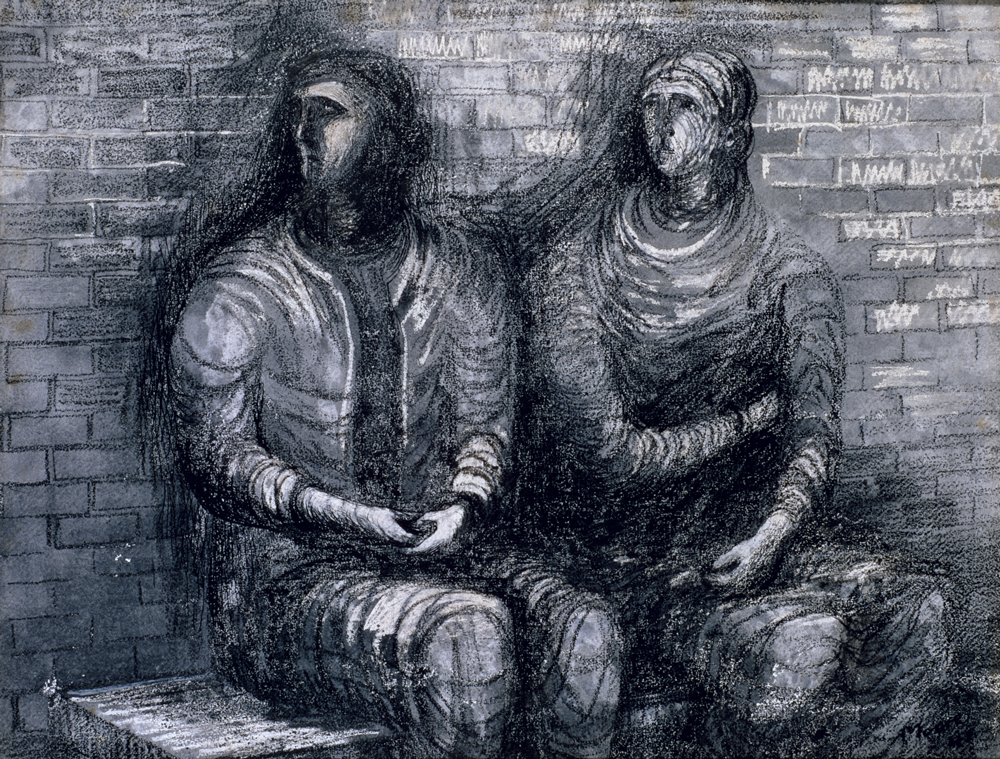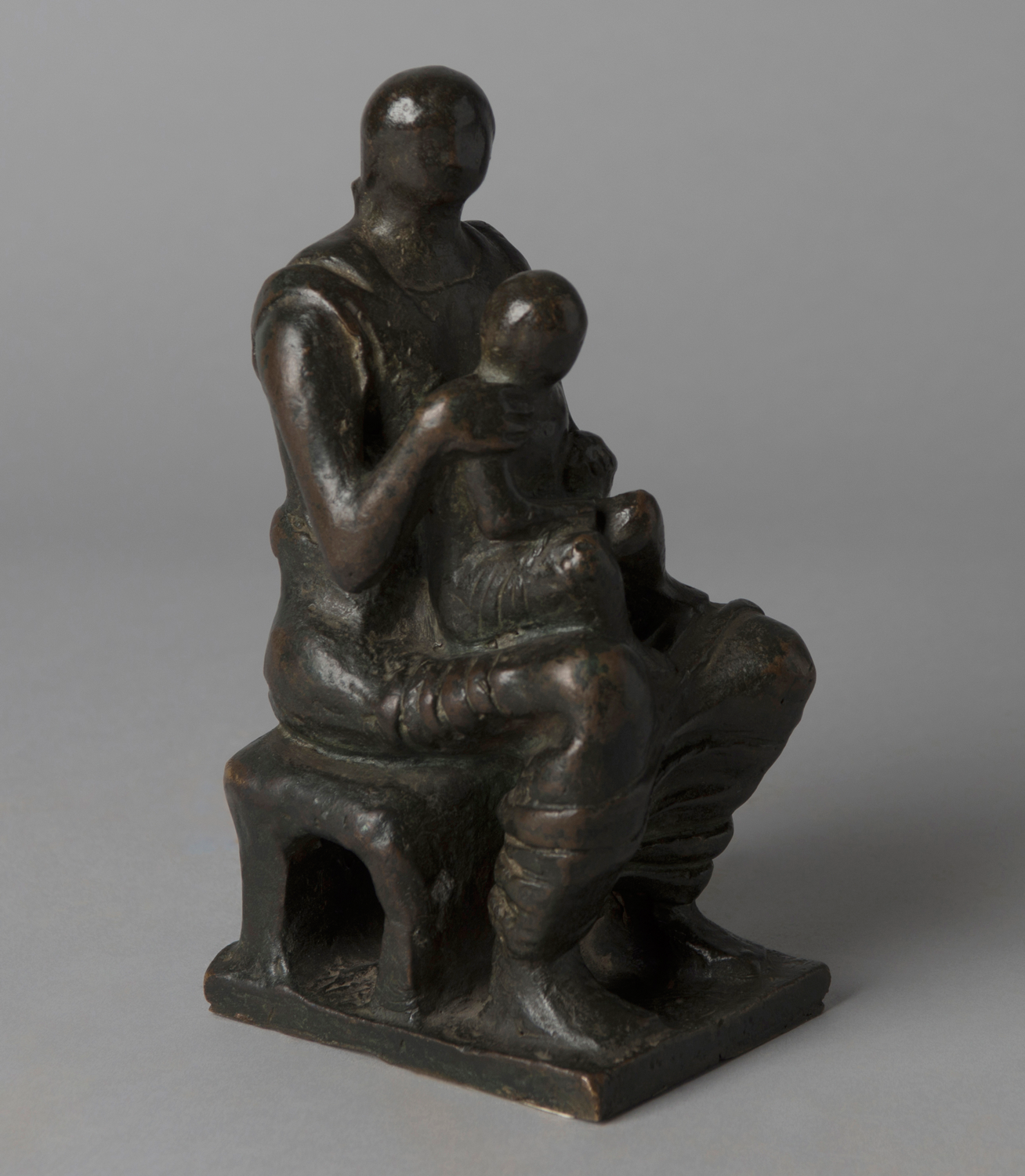
Amongst the current exhibitions at Pallant House Gallery is a jewel like show titled ‘Henry Moore: The Artist and his Patron’ which runs until 8th March 2020. It explores the importance of the Reverend Walter Hussey, later Dean of Chichester Cathedral, in re-establishing church patronage amongst many of the most important Modern British artists of the 20th century. Central to the narrative of the exhibition is Henry Moore and his Northampton Madonna and Child.
The artist Henry Moore had links to Sussex beyond his friendship with Walter Hussey.
Visiting Chichester Cathedral as a young sculpture student in the 1920’s, Henry Moore was struck by the “deep human feeling” in the two medieval carved stone reliefs in the south quire aisle. The reliefs depict ‘The Raising of Lazarus’ and ‘Christ Arriving at the House of Mary and Martha’. Writing in response to his encounter with them Moore remarked: “I stood before them for a long time. They were just what I wanted to emulate in sculpture: the strength of directly carved form, of hard stone, rather than modelled flowing soft form.”
Moore went on to comment on the deep religious sincerity of these works. The expression on Christ’s face in the Raising of Lazarus communicates his deep sorrow. It reminds us that this is the God who knows what it is to be human: our strengths and our weaknesses; our hopes and our fears; our joys and our sorrows; and knowing us completely, loves us completely.
In 1942 The Revd. Walter Hussey, then Vicar of St Matthew’s, Northampton, first saw Henry Moore’s shelter drawings at the National Gallery in London. They depicted people taking refuge in London’s underground stations during the Blitz. Hussey would comment on the ‘dignity and three dimensional quality’ of the figures.
Hussey wished to mark St Matthew’s 50th Anniversary by commissioning a piece of art.
Moore and Hussey met for the first time at the Angel Hotel in Northampton during the blackout.
Walter Hussey asked Henry Moore ‘whether he would believe in the subject…’ The artist replied ‘Yes I would. Though whether or not I should agree with your theology, I just do not know. I think it is only through our art that we artists can come to understand your theology.’
Sir Kenneth Clark, the then Director of the National Gallery, took an active part in advising during the commissioning process and lending his support to that of the parish’s Parochial Church Council.

In 1942, as bombs fell upon Britain Walter Hussey commissioned Henry Moore to carve the Madonna and Child in the warm hues of Hornton stone – a very English response to all that Nazism represented.
Letters, sculptures and works on paper from the Hussey Bequest and the gallery’s collections give voice to this extraordinary story of an artist and his patron.
Today it is hard to comprehend the adverse criticism the sculpture attracted.
The Madonna and Child at Northampton is just a little larger than life-size. The deep religious sincerity and human feeling which the artist Henry Moore had noted in the Lazarus carving at Chichester Cathedral is notable in his Madonna and Child.
As you enter St Matthew’s in Northampton you are held by Mary’s gaze and as you approach the group you cannot help but be moved to place your hands upon her knees as the Christ Child, Jesus, looks straight into your eyes conveying a sense of profound love and anticipation which for Christians is at the heart of the Christmas story.
I hope your Christmas is blessed with love, peace and joy.